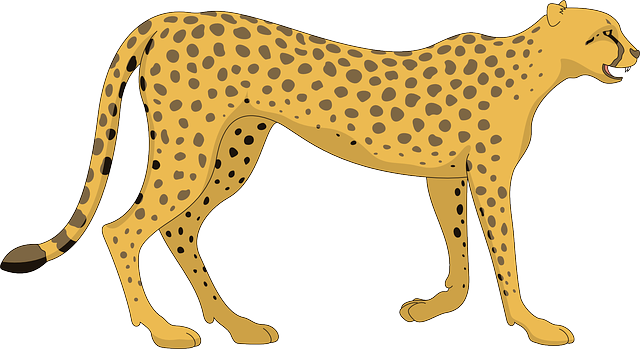Can you identify the animals in the pictures?
 |
 |
 |
 |
 |
 |
 |
 |
 |
 |
 |
 |
Animals are living organisms that have a body made of many cells and can move, reproduce, grow, eat and breathe.
Let's discuss animals and their characteristics in more detail.
Organisms are made of cells. Cells are the basic building blocks of all living organisms. Some organisms are made up of one cell. They're called unicellular organisms. Other organisms are made up of more than one cell. They're called multicellular organisms. Animals are multicellular organisms. They are made up of millions of cells. An animal cell is a type of cell that is exclusively observed in animal tissues. Different types of cells are designed to perform specific functions. Skin cells, muscle cells, blood cells, nerve cells, and fat cells are types of animal cells.
All animals need food to survive.
Here's a fun fact!
Did you know that giraffes spend most of their day eating? Giraffes can eat up to 75 pounds (34 kilograms) of food per day.
Breathing supplies organs and muscles with oxygen. Animals need oxygen to survive. They get their oxygen through the process of breathing. But not every animal breathes the same way.
All breathing methods aim to transport oxygen into the cells and the remaining carbon dioxide out of the cells.
Here's a fun fact!
There are lots of air-breathing animals that are built for breath-holding. Turtles can spend all winter long at the bottom of a frozen lake in deep hibernation without using their lungs.
Animals reproduce mainly in two ways.
Here's a fun fact!
The elephants' gestational period (the length of time that they're pregnant) is longer than that of any other animal. It lasts for more than a year and a half or 640 to 660 days.
Animals move differently. Some are fast, and some are slow.
Why do animals move? They move from one place to another to find food, to escape from other animals that are hunting them, or to find shelter.
How do animals move? There are many ways animals move. They jump, run, slide, glide, fly, slither, swim, climb, hover, creep, crawl, wiggle, and so much more. To move, animals use different body parts. Some, like rabbits, use their legs. Some, like fish, use fins. And some, like birds, use wings. They can also use other organs, like opossums that use their tail to climb.
Where do animals move? Animals move through four different types of environments:
Animals are capable of moving through more than one type of medium.
Here's a fun fact!
The fastest land animal is the cheetah, which has a recorded speed between 109.4 km/h (68.0 mph) and 120.7 km/h (75.0 mph).

Anything in the environment that causes a change is called a stimulus. Animals can sense and respond to stimuli around them. Stimuli can be external or internal. Animals react to many stimuli, including light, temperature, water, odor, pressure, etc. An example is when a dog salivates in response to the smell of its food.
Homeostasis is the way animals maintain a stable internal balance in their body. Cells require appropriate conditions that are not constant (temperature, ph, etc.) to function properly. But, despite the changes in the environment, animals can maintain internal conditions within a narrow range.
Now that we learned about animals and their characteristics, let's discuss how we can group them.
Animals are organisms, further broken into sub-groups. Animals are broken down into:
Vertebrates are animals with a backbone. They are further broken down into five classes: amphibians, birds, fish, mammals, and reptiles.
1. Frog skeleton anatomy, where the presence of the backbone can be easily detected.
Invertebrates are animals that neither possess nor develop a backbone. Familiar examples of invertebrates include arthropods, mollusks, annelids, and cnidarians.
2. Jellyfish - an example of an invertebrate. This animal doesn't possess a backbone.